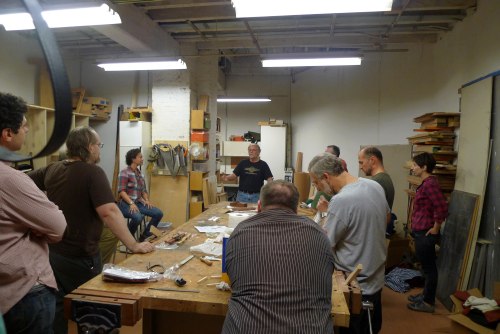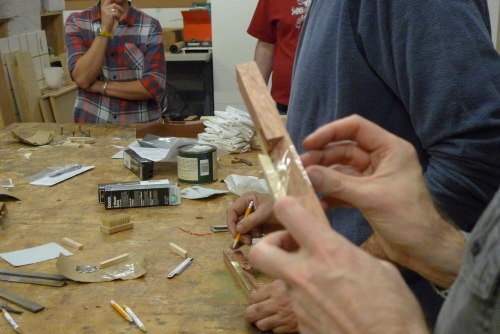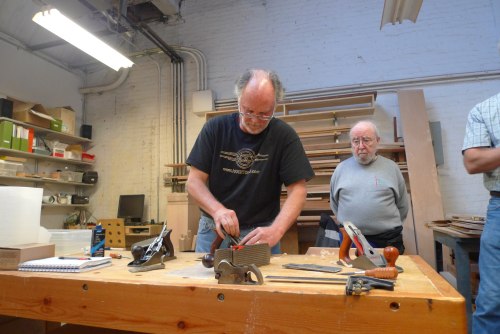|
|
|
 Joel's Blog Joel's Blog |
 Built-It Blog Built-It Blog |
 Video Roundup Video Roundup |
 Classes & Events Classes & Events |
 Work Magazine Work Magazine |
| Newer Entries... | |
 | Decorative Art and a Walk Through Central Park - 12/11/2012 |
 | Clamps For Christmas - 12/08/2012 |
 | Cheap!!!! The High Cost of Discount Culture - 12/06/2012 |
 | Is This Tool Sharp? - 12/04/2012 |
 | A Quick Update On My Last Blog On Mortise Benches Etc. - 12/02/2012 |
 | A Mortise Bench And A New Found Resource - 11/27/2012 |
 | The Henry R. Luce Center for the Study of American Art at the Metropolitan Museum of Art - 11/13/2012 |
 | Suburban Brooklyn! - 11/06/2012 |
 | Hurricane Sandy Blows - 11/01/2012 |
 | Ron Hock and the Makeville Spokeshave Build - 10/30/2012 |
 | Tool Belt Buckles - 10/23/2012 |
 | Wooden Spokeshaves - 10/16/2012 |
 | Further Thoughts On Grinding - 10/09/2012 |
 | You Are Invited to HandWorks May 24-25 2013 Amana, Iowa - 10/02/2012 |
 | Ron Hock Visit and Other News - 09/25/2012 |
 | Secrets of Sharpening - The Wet Paper Towel - 09/11/2012 |
 | How To Build a TARDIS - 09/06/2012 |
 | Norris vs. Stanley C. 1880's - Stanley Wins! - 09/04/2012 |
 | Happy Summer and Progress - 08/28/2012 |
 | New for August - Mobile Web Site - 08/16/2012 |
| Older Entries... | |
|
Hours: M-F 9:00-5:00, closed Sat,Sun Our Guarantee & Return Policy Shipping and Sales Tax Info Privacy Policy Holiday Calendar |
|
Contact Us:
Email: support@toolsforworkingwood.com Phone: 800-426-4613 or 718-499-5877 Visit Us in Brooklyn: Directions to Our Showroom © 1999-2019 toolsforworkingwood.com Powered by 01 Inc. Coded entirely in NYC |



 The coolest thing about an evening with
The coolest thing about an evening with  In addition to the spokeshave classes Ron also ran a plane clinic. It was a lot of fun and pretty crowded. What amazed me is that people brought planes in pretty good shape. I was expecting chunks of rust but most of the planes only required a little work to get going. I think however with all the current literature promoting all sorts of new tech stuff, lots of people forget just how easy it is to get most 70 year old plane relics working to pretty good performance. Unless they have been badly treated or broken in the past they all come from an age when the tools worked and worked well. If you add in a cap iron performance will bump up, and with a
In addition to the spokeshave classes Ron also ran a plane clinic. It was a lot of fun and pretty crowded. What amazed me is that people brought planes in pretty good shape. I was expecting chunks of rust but most of the planes only required a little work to get going. I think however with all the current literature promoting all sorts of new tech stuff, lots of people forget just how easy it is to get most 70 year old plane relics working to pretty good performance. Unless they have been badly treated or broken in the past they all come from an age when the tools worked and worked well. If you add in a cap iron performance will bump up, and with a  I'm going to write more about Ron's trip in the next week, about our trip to the museum, and how we spoke about "third rate woodworking" and other stuff, but that's next time.
I'm going to write more about Ron's trip in the next week, about our trip to the museum, and how we spoke about "third rate woodworking" and other stuff, but that's next time.
Which is a pretty popular, easy to apply finish